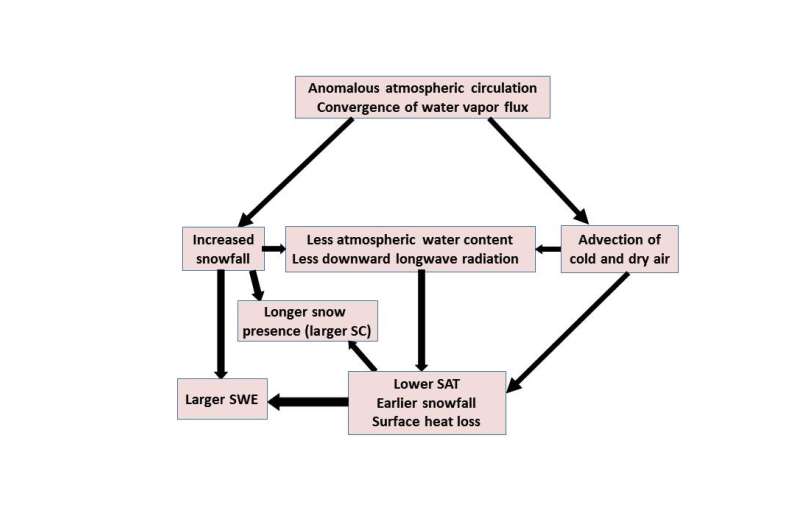Autumn Eurasian snow variability in response to atmospheric circulation

Eurasian snow can influence the Indian summer monsoon and the East Asian climate. Variability of autumn Eurasian snow is a contributing factor in wintertime Artic Oscillation variation—an important climate system in the Northern Hemisphere. Studying the changes in autumn Eurasian snow and the factors involved is important for the understanding of the Eurasian climate variability in subsequent seasons.
Dr. YE Kunhui, who has recently graduated from the Chinese University of Hong Kong, worked with Prof. WU Renguang at Institute of Atmospheric Physics of Chinese Academy of Sciences to investigate the autumn Eurasian snow variability, intending to provide a better understanding of the factors involved in Eurasian snow changes and their impacts on the wintertime Arctic Oscillation. The study is recently published in Advances in Atmospheric Sciences.
Researchers showed that both snowfall and surface air temperature contribute to the snow variability via different pathways, and they exhibited differing levels of importance in different regions (Figure). Their further analysis revealed accompanying changes in surface heat fluxes and atmospheric circulations. The atmospheric water vapor transport and its divergence/convergence are important in the snowfall and longwave radiation changes. The anomalous downward longwave radiation and anomalous wind advection contribute to surface temperature changes.
The study concluded that atmospheric circulation and associated changes in the land-surface state are essential factors of influence for the autumn Eurasian snow variability. This complicates the prediction of autumn Eurasian snow anomalies and their climatic impacts.
More information: Kunhui Ye et al, Autumn snow cover variability over northern Eurasia and roles of atmospheric circulation, Advances in Atmospheric Sciences (2017). DOI: 10.1007/s00376-017-6287-z
Provided by Institute of Atmospheric Physics, Chinese Academy of Sciences



















